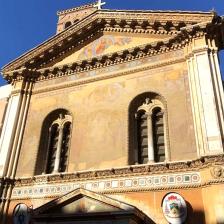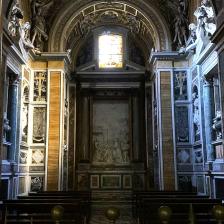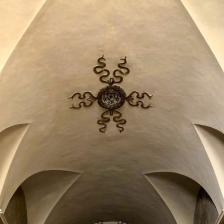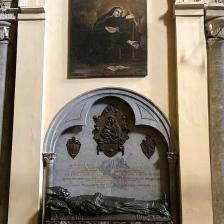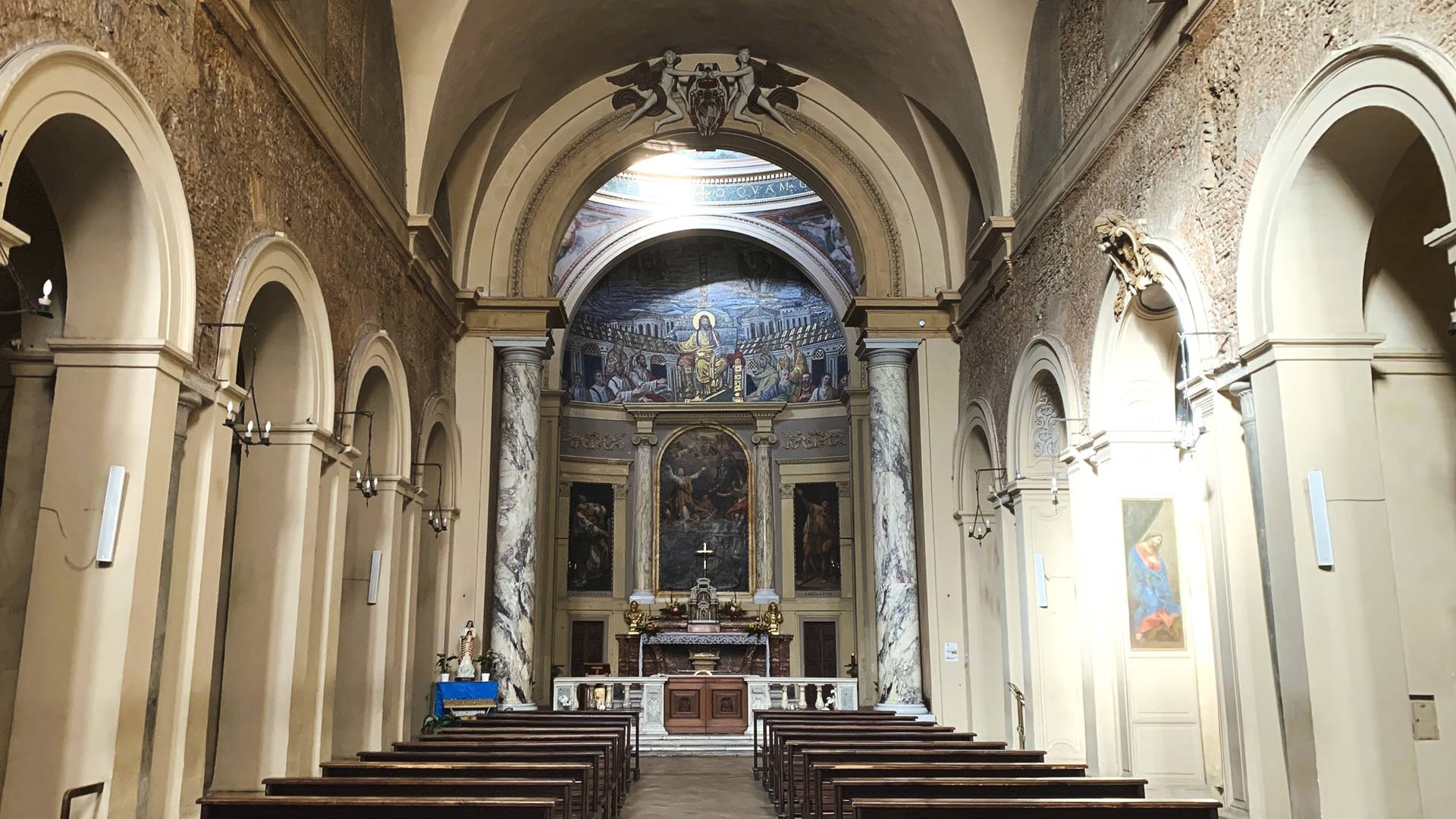
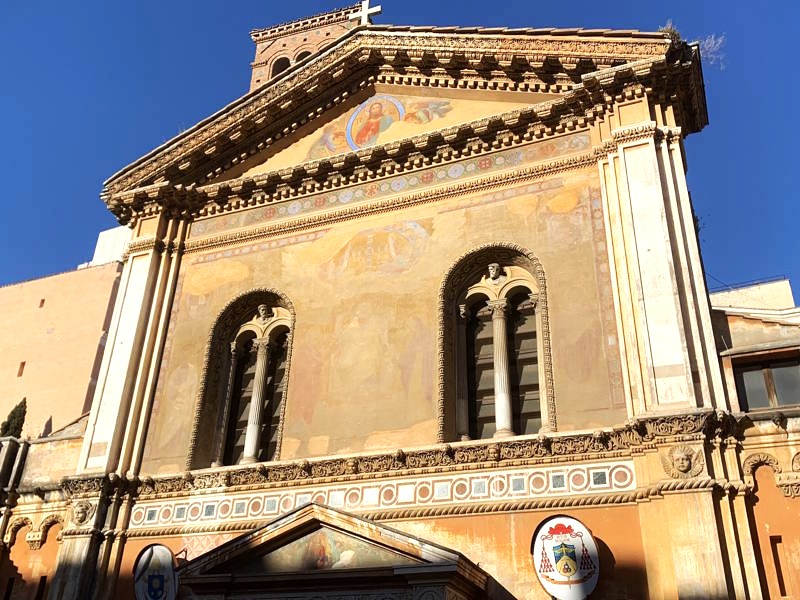
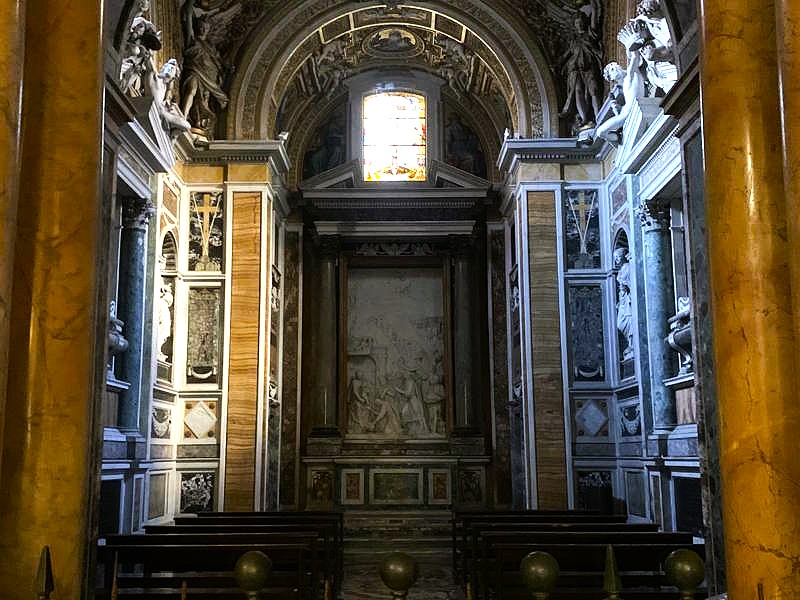
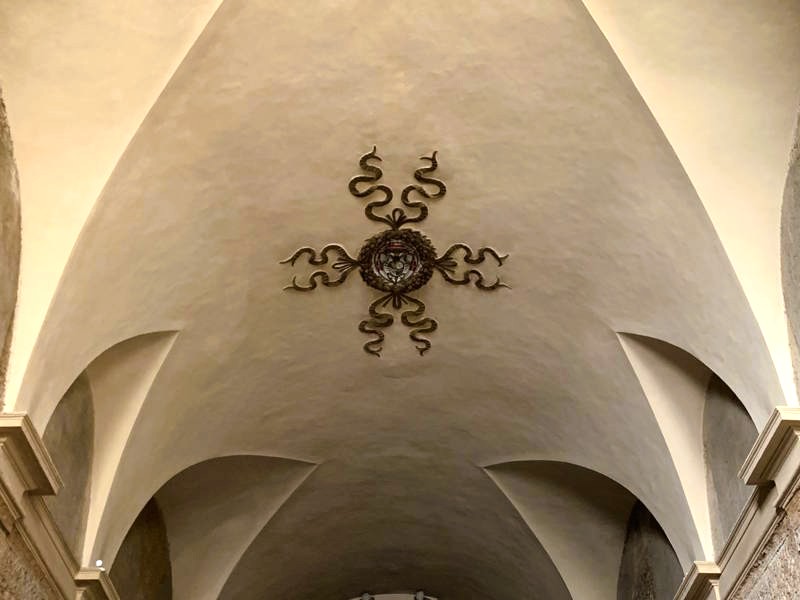
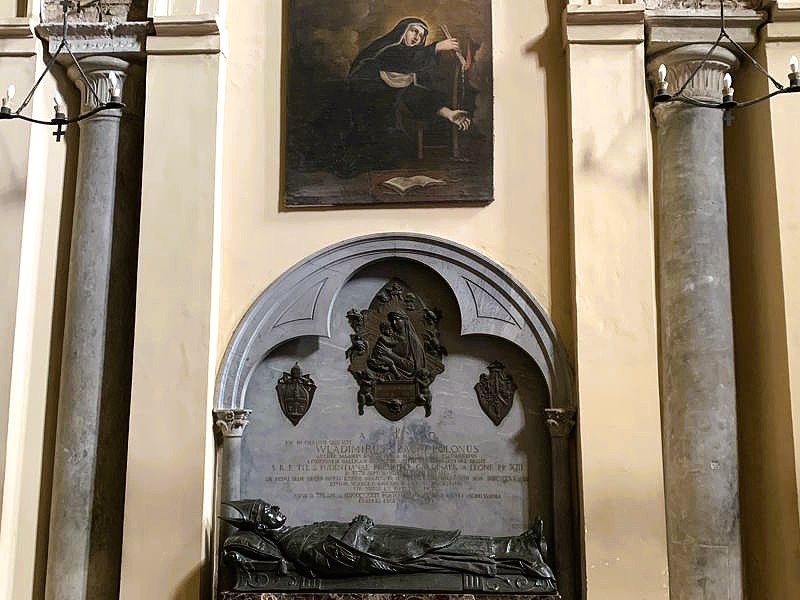
The basilica of Santa Pudenziana al Viminale near Santa Maria Maggiore is one of the oldest churches in Rome and was built, according to tradition, on the domus of the Senator Pudens, converted to Christianity by the apostle Peter together with his daughters Pudenziana and Prassede, martyred during the persecution of Antoninus Pius.
The basilica, originally with three naves, was built in the 4th century AD, under the pontificate of Siricius, on the remains of ancient baths dating back to two centuries earlier. Rebuilt by Pope Adrian I in the 8th century, it underwent various restorations over time, under the pontificates of Gregory VII and Innocent III, to whom we owe the bell tower. Further interventions date back to the sixteenth century, by the hands of the architects Francesco da Volterra - to whom we owe the transformation into a single nave - and Carlo Maderno. The facade has an elegant frieze from the 11th century, with the medallions of Pastore and Pudente, Pudenziana and Prassede, and in the middle, the mystic Agnello.
Inside you can admire the wonderful apse mosaic from the 4th century. The latter, among the oldest in Rome, can be dated between the 4th and 5th centuries. In the center is Christ depicted on a high throne, as Imperator Orbis Terrarum, the Lord of the whole earth, surrounded by the apostles - there are ten of them left, the others probably disappeared with the sixteenth-century renovations - and by two women offering him a crown each, whose identity is the subject of discussion: according to some they would be the sisters Pudenziana and Prassede, according to others, the personifications of the Ecclesia ex circumcisione (the Church of the Jews) and of the Ecclesia ex gentibus (the Church of the Gentiles or pagans ) who respectively crown their representatives, the apostles Peter and Paul. Only the figure of Christ has a halo and holds an open book in his hand, on which stands the inscription: Dominus Conservator Ecclesiae Pudentinae, "The Lord Protector of the Pudentine Church". The figures stand in front of a porticoed exedra, behind which the profile of a city can be glimpsed, which could be identified with Jerusalem. This interpretation is made plausible by the presence, in the center of the mosaic, of a cross covered with gems which, according to tradition, was erected on Calvary in 416 by Emperor Theodosius II, in memory of a miraculous apparition of the cross.
Information
Philippine Community ChaplaincyMonday ClosedTuesday from 10.00 until 12.00Wednesday from 10.00 until 12.00Thursday from 10.00 until 12.00 and in the afternoon from 15.00 until 17.00Friday from 10.00 until 12.00Saturday from 10.00 until 12.00 and in the afternoon from 15.00 until 17.00Sunday from 10.00 until 12.00 and in the afternoon from 15.00 until 17.00
Holy Mass of the Philippine CommunityThursday at 17.00 Holy Mass in Tagalog languageSaturday at 17.00 Holy Mass in Tagalog languageSunday at 9.00 Holy Mass in English, 10.30, 12.00 noon, 16.00 Holy Mass in Tagalog
Summer schedule of Holy MassSunday at 10.30, 12.00, 16.00 Holy Mass in Tagalog language
Times may be subject to change so please contact the church directly
 Condividi
Condividi
Location
To find out about all accessibility services, visit the Rome accessible section.












































